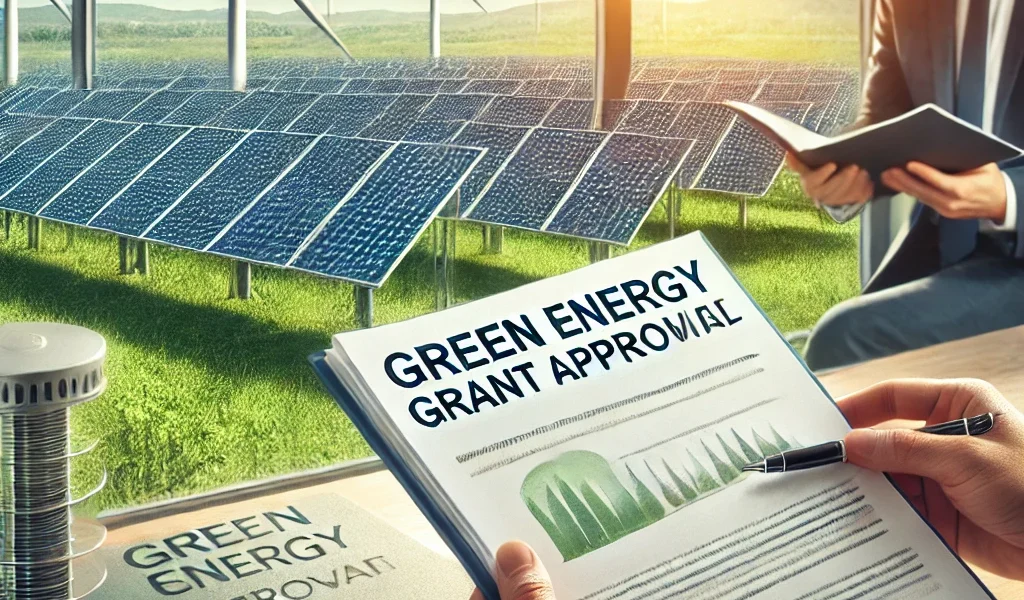As the world shifts toward sustainable solutions, green energy grants have become essential for individuals, businesses, and organizations looking to invest in solar and renewable energy projects. Governments and international bodies offer various funding programs to encourage clean energy adoption, reduce carbon footprints, and combat climate change.
In this guide, we will explore how to secure green energy grants, eligibility criteria, application processes, and tips to maximize funding for solar and renewable energy projects.
What Are Green Energy Grants?
Green energy grants are financial aids provided by governments, environmental agencies, and non-profits to support the development and implementation of renewable energy projects. Unlike loans, grants do not require repayment, making them an excellent funding option for:
- Solar panel installations
- Wind energy farms
- Hydropower systems
- Biomass and biofuel projects
- Energy-efficient upgrades
These grants help cover costs related to research, equipment, installation, and maintenance, encouraging individuals and businesses to transition to sustainable energy sources.
Why Are Green Energy Grants Important?
1. Reduce Initial Investment Costs
Renewable energy systems can be expensive to install. Grants help offset these costs, making clean energy more accessible.
2. Promote Sustainability & Reduce Carbon Emissions
Encouraging green energy adoption helps in reducing reliance on fossil fuels, lowering greenhouse gas emissions, and combating climate change.
3. Boost Energy Independence
Renewable energy reduces dependency on imported fuels, improving national energy security.
4. Support Green Jobs & Economic Growth
By funding renewable projects, governments create job opportunities in solar, wind, and other sustainable industries.
Types of Green Energy Grants Available
1. Government Renewable Energy Grants
Most governments offer direct grants to individuals, businesses, and municipalities for adopting renewable energy technologies.
- Eligibility: Homeowners, small businesses, non-profits, and commercial organizations.
- Examples: Solar panel rebates, wind energy installation incentives, biofuel research grants.
2. Research & Development (R&D) Grants
These grants support innovation in renewable energy technologies, such as improved solar panels, battery storage, and energy-efficient appliances.
- Eligibility: Universities, tech startups, research institutes.
- Examples: Funding for solar battery development, advanced wind turbine research.
3. Clean Energy Business Grants
Governments and environmental organizations fund businesses that focus on renewable energy products and services.
- Eligibility: Startups, SMEs, and large corporations involved in green energy solutions.
- Examples: Subsidies for manufacturing solar panels, wind turbine projects.
4. Non-Profit & Community Grants
These grants support NGOs and community-led projects that promote renewable energy access.
- Eligibility: Non-profit organizations, community cooperatives, rural development programs.
- Examples: Grants for off-grid solar power in rural areas, sustainable energy education programs.
5. International Renewable Energy Grants
Global organizations such as the United Nations (UN), World Bank, and International Renewable Energy Agency (IRENA) provide grants for large-scale renewable projects.
- Eligibility: Governments, large enterprises, international NGOs.
- Examples: Grants for developing countries to set up solar farms, hydropower stations.
How to Apply for Green Energy Grants
Step 1: Identify Suitable Grants
Research available grants based on your project’s needs. Visit official government websites, green energy funding platforms, and international organizations’ portals.
Step 2: Check Eligibility Requirements
Each grant has specific eligibility criteria, including:
- Business size and industry type
- Project location and environmental impact
- Compliance with sustainability standards
Step 3: Prepare Required Documents
Most grant applications require:
- A detailed project proposal
- Budget estimates
- Business registration certificates (for companies)
- Environmental impact assessments
Step 4: Submit the Application
Apply through the official grant portal or via authorized agencies. Double-check all required documents before submission.
Step 5: Follow Up on Application
After submission, track the progress of your application. Some grants require additional information or interviews before approval.
Tips to Maximize Your Chances of Getting a Green Energy Grant
1. Develop a Strong Project Proposal
Your proposal should clearly outline:
- The environmental benefits of your project
- A well-defined budget plan
- How the funding will be utilized effectively
2. Partner with Experts & Organizations
Collaborate with renewable energy consultants, engineers, and green organizations to strengthen your application.
3. Demonstrate Long-Term Sustainability
Funding agencies prefer projects that offer long-term benefits. Showcase how your project will remain sustainable beyond the grant period.
4. Stay Updated on Funding Opportunities
Renewable energy grants are updated frequently. Subscribe to government and environmental newsletters to stay informed.
5. Ensure Compliance with Legal & Environmental Regulations
All grant-funded projects must adhere to national and international sustainability laws. Ensure compliance to avoid disqualification.
Common Mistakes to Avoid When Applying for Green Energy Grants
- Incomplete Applications – Missing documents or incorrect information can lead to rejection.
- Not Meeting Eligibility Criteria – Apply only for grants that match your project’s scope.
- Weak Financial Planning – Clearly define how the grant money will be used.
- Late Submissions – Be mindful of application deadlines.
- Failing to Show Environmental Impact – Clearly explain how your project contributes to sustainability.
Case Studies: Success Stories of Green Energy Grants
Case Study 1: A Small Business Adopts Solar Energy
A bakery in [Your Country] received a government grant to install solar panels. This reduced their electricity costs by 60% and contributed to a greener environment.
Case Study 2: Rural Electrification with Renewable Energy
A non-profit secured funding from an international organization to set up micro solar grids in remote villages, bringing electricity to over 500 households.
Case Study 3: Research Grant for Next-Gen Wind Turbines
A university obtained an R&D grant to develop more efficient wind turbines, leading to significant advancements in renewable energy technology.
Final Thoughts
Green energy grants provide an incredible opportunity to transition to renewable energy without bearing the full financial burden. Whether you are a homeowner, business owner, researcher, or non-profit organization, securing these grants can help you contribute to a cleaner and more sustainable future.
Start your grant application today and take a step towards a greener tomorrow!




